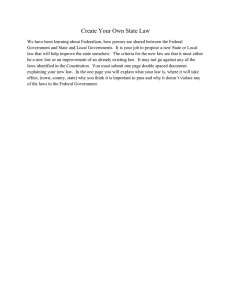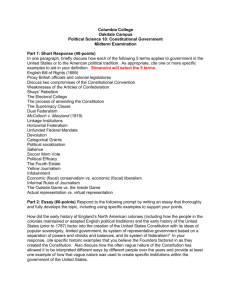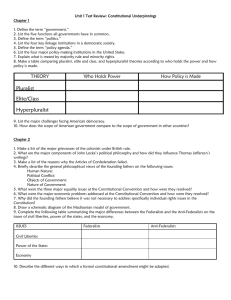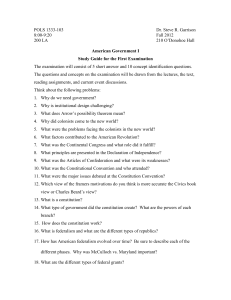– Exam #3 Study Guide
advertisement
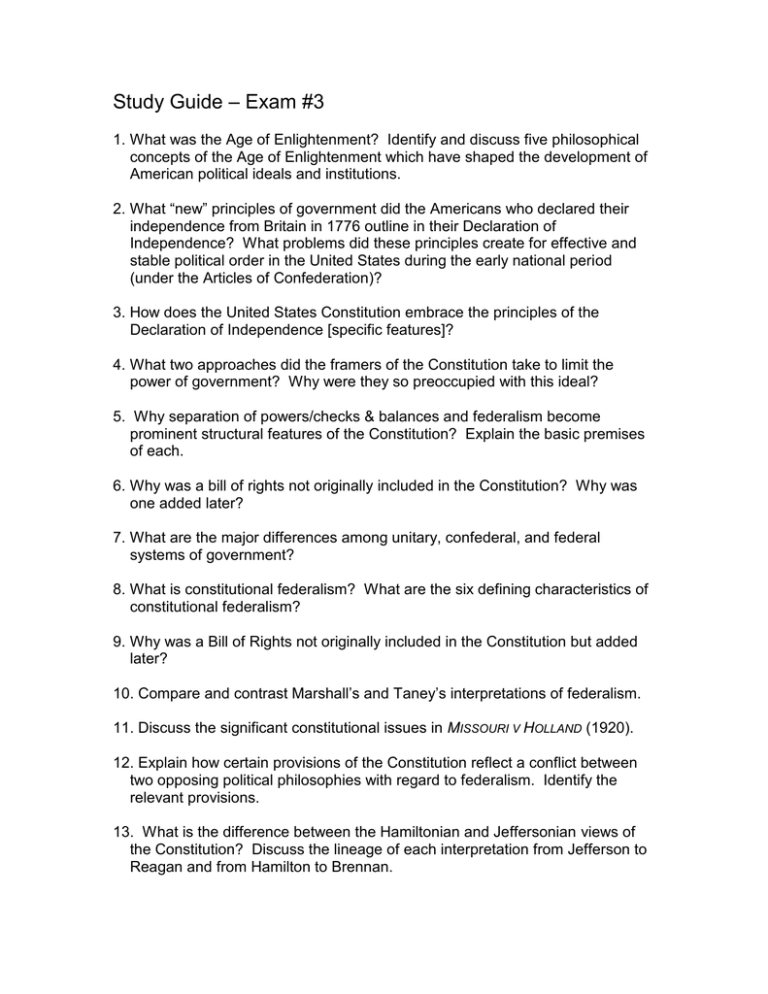
Study Guide – Exam #3 1. What was the Age of Enlightenment? Identify and discuss five philosophical concepts of the Age of Enlightenment which have shaped the development of American political ideals and institutions. 2. What “new” principles of government did the Americans who declared their independence from Britain in 1776 outline in their Declaration of Independence? What problems did these principles create for effective and stable political order in the United States during the early national period (under the Articles of Confederation)? 3. How does the United States Constitution embrace the principles of the Declaration of Independence [specific features]? 4. What two approaches did the framers of the Constitution take to limit the power of government? Why were they so preoccupied with this ideal? 5. Why separation of powers/checks & balances and federalism become prominent structural features of the Constitution? Explain the basic premises of each. 6. Why was a bill of rights not originally included in the Constitution? Why was one added later? 7. What are the major differences among unitary, confederal, and federal systems of government? 8. What is constitutional federalism? What are the six defining characteristics of constitutional federalism? 9. Why was a Bill of Rights not originally included in the Constitution but added later? 10. Compare and contrast Marshall’s and Taney’s interpretations of federalism. 11. Discuss the significant constitutional issues in MISSOURI V HOLLAND (1920). 12. Explain how certain provisions of the Constitution reflect a conflict between two opposing political philosophies with regard to federalism. Identify the relevant provisions. 13. What is the difference between the Hamiltonian and Jeffersonian views of the Constitution? Discuss the lineage of each interpretation from Jefferson to Reagan and from Hamilton to Brennan.
